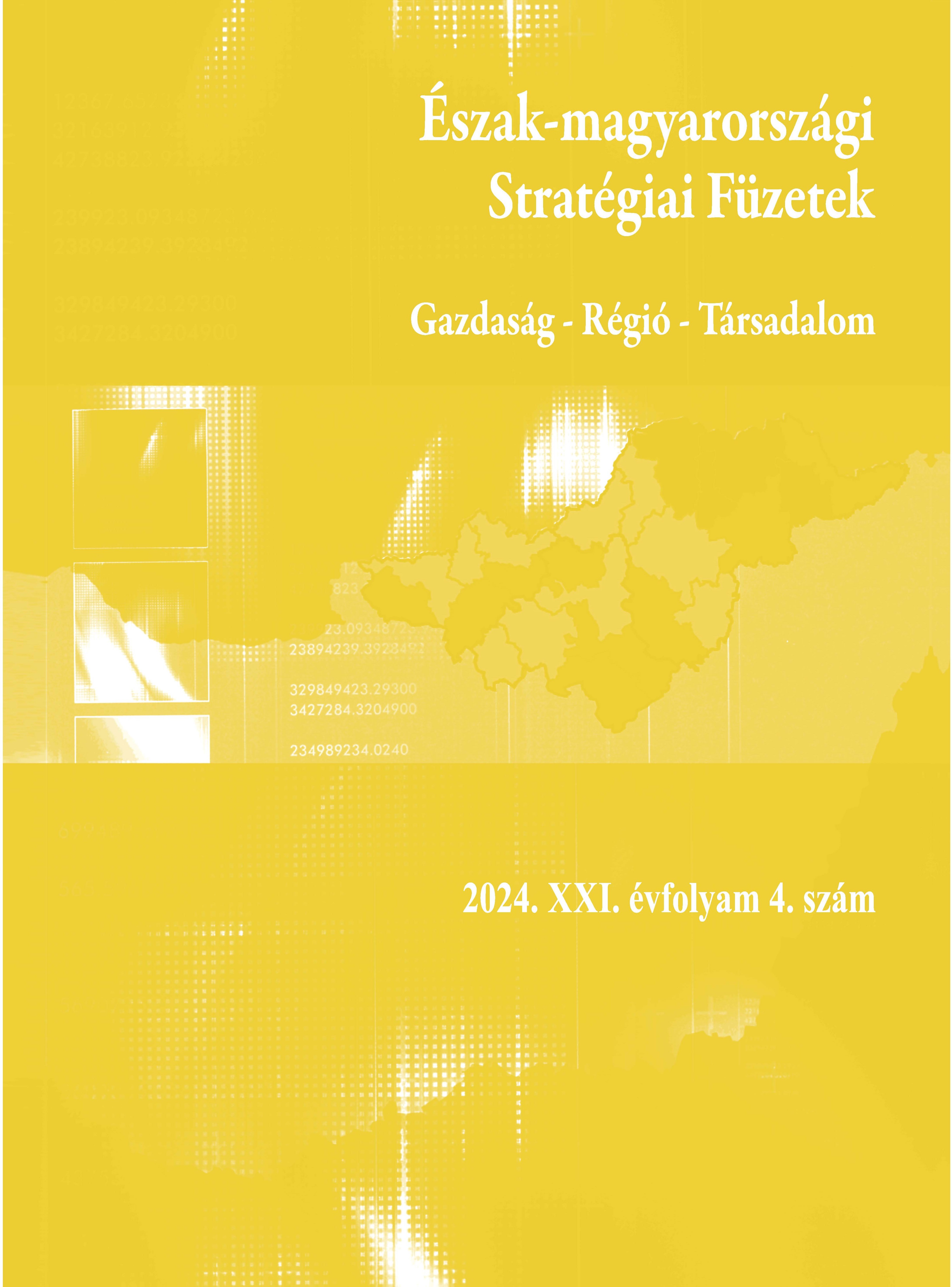The Role and Sustainability of Social Enterprises in the Hungarian Economy
DOI:
https://doi.org/10.32976/stratfuz.2024.47Kulcsszavak:
social innovation, disparity, sustainability, entrepreneurshipAbsztrakt
The economies of the Central and Eastern European countries have suffered a significant decline as a result of the geopolitical changes of 1989-90. A number of enterprises with low efficiency, obsolete technology and product structure closed down. The lack of new productive capacity led to a sharp rise in unemployment. The recession, inflation and employment problems particularly affected Hungary's regions. A series of social enterprises have been set up to improve employment in disadvantaged municipalities, as a result of local and government initiatives. In their study, the authors review their spatial distribution, their impact on the local economy and society, and the challenges related to the sustainability of their operations.
Hivatkozások
Agostini, M. R., Bitencourt, C. C., & Vieira, L. M. (2019). Social Innovation in Mexican Coffee Production: Filling 'Institutional Voids'. International Review of Applied Economics, 1-19. https://doi.org/10.1080/02692171.2019.1638351
Crowther, D., & Quoquab, F. (2022). Social Entrepreneurs: Mobilisers of Social Change. Bingley: E merald Publishing,. https://doi.org/10.1108/S2043-0523202218
Crowther, D., & Selfi, S., (2024). Innovation, Social Responsibility and Sustainability. Leeds: Emerald Publishing.
Defoumy, J., & Nyssens, M. (2009). Conceptions of Social Enterprise and Social Entrepreneurship in Europe and United States: Convergences and Divergences. Journal of Social Entrepreneurship, 1, 32-53. https://doi.org/10.1080/19420670903442053
G. Fekete, É., & Lipták, K. (2011). Postmodern values in rural peripheries. Journal of Settlements and Spatial Planning 2(1), pp. 1-7.
Heinze, R. G., & Naegele, G. (2012). Social Innovations in Ageing Societies. In Challenge Social Innovation (pp. 153-167). Berlin, Heidelberg: Springer. https://doi.org/10.1007/978-3-642-32879-4_10
Harangozó, Zs. (2022). A társadalmi innováció jelentősége a vidékfejlesztésben. Észak-magyarországi Stratégiai Füzetek, 19(1), 159-175. https://doi.org/10.32976/stratfuz.2022.14
Howaldt, J., & Schwarz, M. (2010). Social Innovation: Concepts, Research Fields, and International Trends. Retrieved August 12, 2016, from http://www.sfs-dortmund.de/odb/Repository/Publication/Doc%5C1289%5CIMO_Trendstudie_Howaldt_Schwarz_englische_Version.pdf
Kaletka, C., Kappler, K. E., Pelka, B., & de Querol, R. R. (2012). Challenges at the Intersection of Social Media and Social Innovation: A Manifesto. In Challenge Social Innovation (pp. 277-292). Berlin, Heidelberg: Springer. https://doi.org/10.1007/978-3-642-32879-4_17
Kocziszky, Gy., Veresné Somosi, M., & Balaton, K. (2017). A társadalmi innováció vizsgálatának tapasztalatai és fejlesztési lehetőségei. Vezetéstudomány (Budapest Management Review), XLVIII(6-7), 15-19. https://doi.org/10.14267/VEZTUD.2017.06.02
Moulaert, F., MacCallum, D., & Hillier, J. (2013). Social Innovation: Intuition, Precept, Concept, Theory, and Practice. In F. Moulaert, D. MacCallum, A. Mehmood, & A. Hamdouch (Eds.), The International Handbook on Social Innovation: Collective Action, Social Learning and Transdisciplinary Research (pp. 13-24). Cheltenham: Edward Elgar. https://doi.org/10.4337/9781849809993.0001
Mulgan, G., Tucker, S., Ali, R., és Sanders, B. (2007). Social Innovation: What It Is, Why It Matters and How It Can Be Accelerated. Skoll Centre for Social Entrepreneurship, Working Paper. The Young Foundation. https://www.youngfoundation.org/our-work/publications/social-innovation-what-it-is-why-it-matters-how-it-can-be-accelerated/
Nelson, R., & Sampat, B. (2001). Making Sense of Institutions as a Factor Shaping Economic Performance. Journal of Economic Behavior & Organization, 44(1), 31-54. https://doi.org/10.1016/S0167-2681(00)00152-9
Nelson, R. R., & Winter, S. G. (1982). An Evolutionary Theory of Economic Change. Cambridge, MA: Harvard Business School Press.
Neumeier, S. (2011). Why Do Social Innovations in Rural Development Matter and Should They Be Considered More Seriously in Rural Development Research? Proposal for a Stronger Focus on Social Innovations in Rural Development Research. Sociologia Ruralis, 52(1), 48-69. https://doi.org/10.1111/j.1467-9523.2011.00553.x
OECD (2003) The Sources of Economic Growth in OECD Countries, OECD.
Phills, J. A., Deiglmeier, K., & Miller, D. T. (2008). Rediscovering Social Innovation. Stanford Social Innovation Review.
Pradel-Miquel, M. (2017). Kiezkulturnetz vs. Kreativquartier: Social Innovation and Economic Development in Two Neighbourhoods of Berlin. City, Culture and Society, 8, 13-19. https://doi.org/10.1016/j.ccs.2016.05.001
Prasad, A., & Manimala, M. J. (2018). Circular Social Innovation: A New Paradigm for India's Sustainable Development. In Social Entrepreneurship and Sustainable Business Models (pp. 141-160). Cham: Palgrave Macmillan. https://doi.org/10.1007/978-3-319-74488-9_6
Scaffidi, F. (2019). Soft Power in Recycling Spaces: Exploring Spatial Impacts of Regeneration and Youth Entrepreneurship in Southern Italy. Local Economy, 34(7), 632-656. https://doi.org/10.1177/0269094219891647
Soma, K., van den Burg, S. W., Hoefnagel, E. W., Stuiver, M., & van der Heide, C. M. (2018). Social Innovation – A Future Pathway for Blue Growth? Marine Policy, 87, 363-370. https://doi.org/10.1016/j.marpol.2017.10.008
Stake, R. E. (1995). The Art of Case Study Research. Sage Publications. Thousand Oaks.
Stiglitz, J. (2013). The Price of Inequality. Norton: New York. https://doi.org/10.1111/npqu.11358
Svensson, P., & Bengtsson, L. (2010). Users' Influence in Social-Service Innovations: Two Swedish Case Studies. Journal of Social Entrepreneurship, 1(2), 190-212. https://doi.org/10.1080/19420676.2010.511813
Ziegler, R. (2010). Innovations in Doing and Being: Capability Innovations at the Intersection of Schumpeterian Political Economy and Human Development. Journal of Social Entrepreneurship, 1(2), 255-272. https://doi.org/10.1080/19420676.2010.511818
##submission.downloads##
Megjelent
Hogyan kell idézni
Folyóirat szám
Rovat
License

This work is licensed under a Creative Commons Attribution-NonCommercial-NoDerivatives 4.0 International License.







